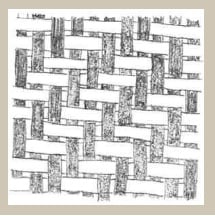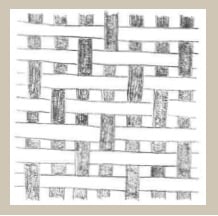Fabrics
In the Tudor and Stuart period there were four main types of fibre available from which to make woven fabric: wool, silk, linen and cotton. All were natural, two from animal and two from vegetable sources.
Making Fabric
It has long been recognised that the ability to depict different types of fabrics is a key skill for painters.
Philips Angel wrote in 1642 that an artist should:
‘... make a proper distinction between silk, velvet, wool and linen stuffs ... a painter worthy of praise should be able to render this variety in the most pleasing way for all eyes with his brushwork, distinguishing between harsh, rough clothiness and smooth, satiny evenness’.
The appearance and feel of a fabric is influenced by the raw materials used to produce threads, the way the threads have been woven together, the way the fabric has been dyed, and the way its surface has been decorated.
Weaves
Different types of material are produced depending on how the threads are woven together. On woven fabrics the threads running vertically are known as the warp threads and the threads running from side to side are the weft threads.













